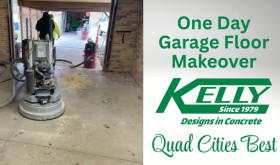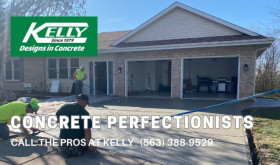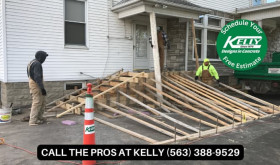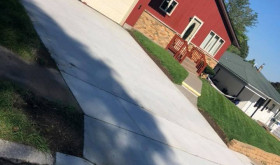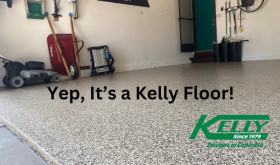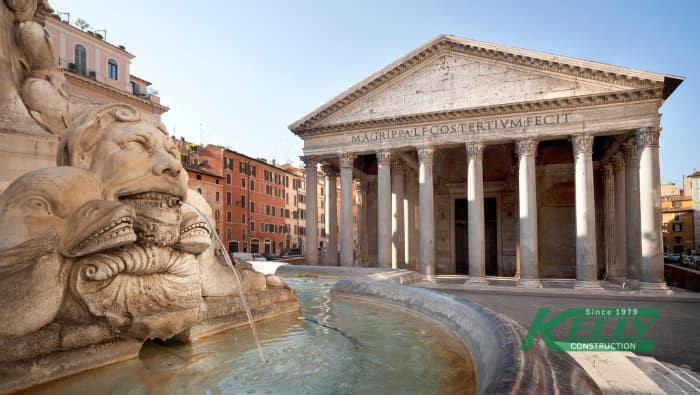
Introduction
Did you know that the majestic Pantheon in Rome, with its iconic dome, has stood for nearly 2,000 years thanks to an ancient form of concrete? This remarkable material has shaped civilizations, from grand architectural wonders to everyday home features. Concrete’s journey through history reveals not just engineering prowess but also evolving creativity in design. In this post, we’ll trace its origins from ancient Rome to today’s innovative applications, showing how it continues to inspire durable, stylish solutions for modern homes. At Kelly Designs in Concrete, we draw on this rich legacy to craft custom concrete elements that blend timeless strength with contemporary aesthetics.
Ancient Beginnings: Concrete in Rome
The story of concrete begins in ancient Rome around 150-200 BC, where engineers revolutionized building materials. Unlike the brittle mixtures used by earlier civilizations like the Egyptians or Greeks—who experimented with lime-based mortars—the Romans developed a superior version called opus caementicium. This concrete was made by mixing pozzolana (volcanic ash from the region around Mount Vesuvius), lime, water, and aggregates like sand or rubble.
What made Roman concrete so enduring? Recent studies, including a 2023 MIT analysis, reveal that lime clasts in the mix allowed for self-healing: when cracks formed, water reacted with the lime to create crystals that filled the gaps, strengthening the structure over time. This innovation enabled feats like the Pantheon’s unreinforced concrete dome—the largest of its kind even today—and the Colosseum, which withstood earthquakes and invasions. Aqueducts, harbors, and baths across the empire showcased concrete’s versatility, often poured into wooden forms or used underwater, thanks to its hydraulic properties.
Fun fact: Roman scholar Vitruvius documented these techniques in his treatise De Architectura, providing a blueprint that influenced builders for centuries.
The Middle Ages to Industrial Revolution
After the fall of the Roman Empire in 476 AD, concrete technology largely faded in Europe during the Middle Ages. The knowledge of pozzolana-based mixes was lost, and builders reverted to stone, brick, or simpler mortars. However, some regions, like the Byzantine Empire, continued limited use in fortifications.
The revival began in the 18th century with experiments in hydraulic cements. In 1824, English bricklayer Joseph Aspdin patented Portland cement, named for its resemblance to Portland stone—a blend of limestone and clay heated to high temperatures. This invention marked the birth of modern concrete, as it could set underwater and harden quickly.
By the mid-19th century, reinforced concrete emerged when French gardener Joseph Monier embedded steel rods in concrete pots to prevent cracking. This tensile strength opened doors to larger structures, like bridges and factories, fueling the Industrial Revolution’s infrastructure boom.
Concrete in the 20th Century: A Design Revolution
The 20th century transformed concrete from a utilitarian material into an architectural icon. Reinforced and prestressed concrete enabled skyscrapers, such as the Empire State Building, and massive dams like Hoover Dam.
Architects like Le Corbusier embraced concrete’s moldability in the modernist movement, pioneering brutalism—a style featuring raw, exposed concrete forms in buildings like the Unité d’Habitation in Marseille. Mid-century trends saw concrete in public works, highways, and even homes, symbolizing progress and durability.
Innovations included lightweight aggregates and admixtures for better workability, allowing intricate designs in stadiums and museums.
Modern Concrete: Innovation and Aesthetics
Today, concrete is more versatile and sustainable than ever. Advances like high-performance concrete (HPC) and ultra-high-performance concrete (UHPC) offer superior strength with thinner profiles, ideal for eco-friendly builds. Researchers continue to draw from Roman secrets; for instance, incorporating self-healing agents or recycled materials reduces carbon footprints.
In home design, concrete shines in polished floors and stamped patios that mimic stone or wood. At Kelly Designs in Concrete, we specialize in these modern techniques, creating custom features like exposed aggregate driveways or minimalist wall finishes that enhance curb appeal and longevity. With low-VOC sealers and permeable options for better drainage, our projects align with today’s green building standards.
As of 2025, ongoing research into carbon-capturing concrete promises even more sustainable futures, echoing the Romans’ ingenuity.
Conclusion
From Roman aqueducts to sleek modern kitchens, concrete’s history is a testament to human innovation and resilience. This enduring material has evolved to meet the demands of each era, offering unmatched durability and design flexibility. If you’re inspired to incorporate concrete’s timeless beauty into your home—whether through a one-day garage floor or an outdoor oasis—reach out to Kelly Designs in Concrete. Contact us today to start your project. Let’s build something that stands the test of time!




